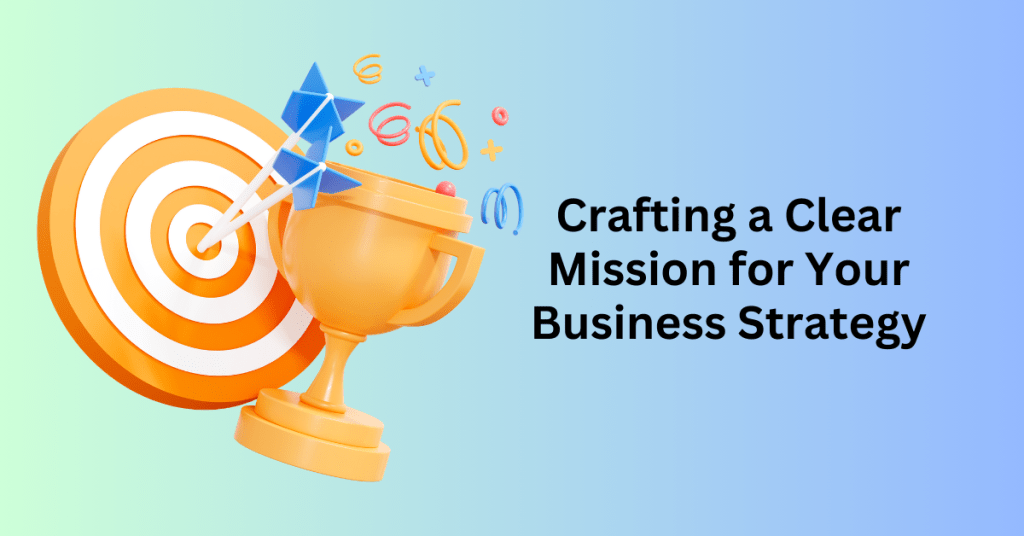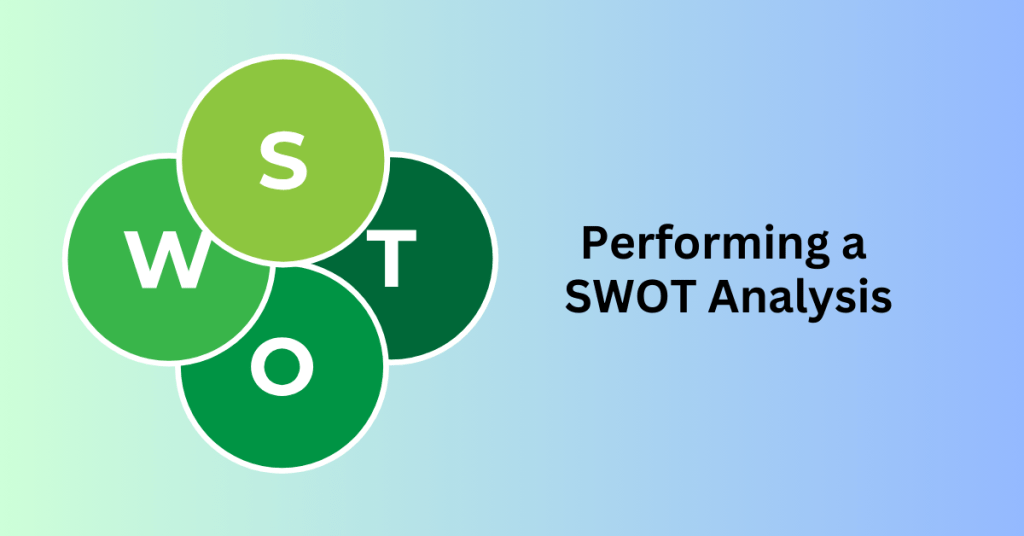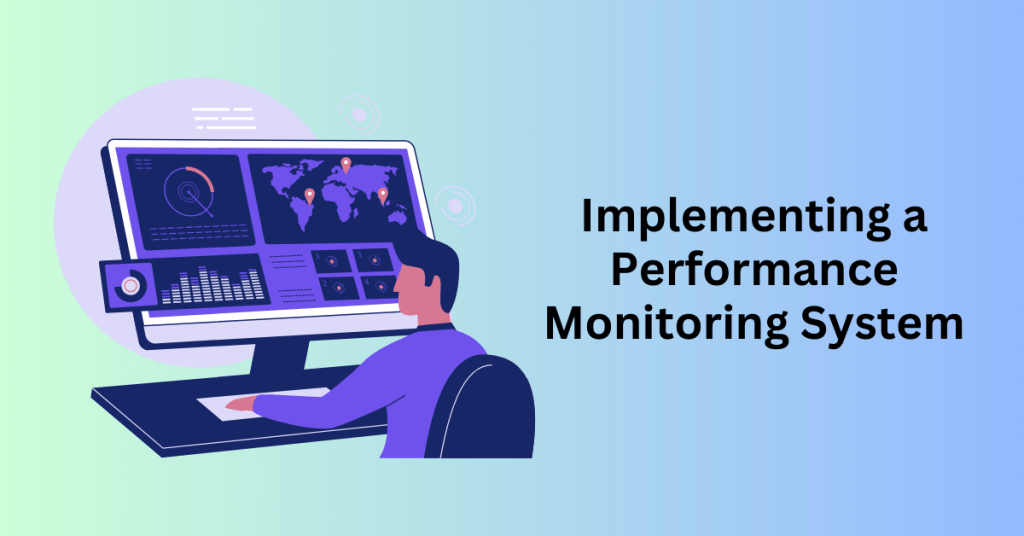As a business owner or solopreneur, adapting to the ever-changing landscape is not just important—it is essential. Moreover, embracing adaptive, effective, and flexible business planning strategies provides a significant advantage over your competitors. These strategies not only help you stay ahead but also mitigate potential issues that could otherwise develop into costly mistakes over time.
Given the difficult challenges and decisions you and your business face daily, having a well-structured plan to guide your decision-making for optimal performance becomes crucial. By incorporating well-thought-out and adaptable plans, you can navigate challenging situations and uncertainties more effectively. At the same time, these plans position your business to capitalize on emerging opportunities with confidence.
For this reason, whether you’re launching a new startup, expanding your digital information business, or scaling an already established venture, having an effective plan is key. It ensures that you stay focused and remain on track toward your goals.
This guide introduces 10 highly effective business planning strategies that are invaluable for creating a roadmap to sustainable growth. Additionally, it highlights how ClickFunnels serves as an all-in-one platform to elevate your operations to new heights.
Ready to dive in? Let’s get started.
Get Your 14-day Free ClickFunnels Account Now
Business Planning Strategies 1. Crafting a Clear Mission for Your Business Strategy

Creating a powerful and effective business planning strategy starts with understanding your ultimate goals. To stay focused and aligned, it’s crucial to define your mission—what you aim to offer, who will benefit from it, and how you plan to deliver value to your audience. By clarifying these aspects, you’ll create a strong foundation for decision-making and ensure your efforts are purposeful and effective.
Step 1: Define Your Audience and Their Needs
Understand Your “Who” Your target audience is at the heart of your mission. Begin by analyzing their demographics, interests, behaviours, and pain points. Take this a step further by developing a detailed customer persona or avatar—a fictional but realistic representation of your ideal customer. This persona should include:
- Demographics: Age, gender, location, income, education level.
- Psychographics: Interests, values, goals, and challenges.
- Behaviors: Spending habits, preferred communication channels, and buying patterns.
For example, if your ideal customer is a working parent in their 30s who values time-saving solutions, your mission must revolve around providing products or services that cater to their busy lifestyle and simplify their routine.
Ask the Right Questions:
- Who are you trying to serve?
- What problems do they face, and how do these challenges affect their lives?
- What are their goals, aspirations, and frustrations?
Developing a detailed understanding of your audience allows you to craft messaging and solutions that resonate with their needs.
Step 2: Define the “What” of Your Mission
What are you offering? Once you’ve identified your audience, the next step is to determine how your products or services address their specific challenges or desires. Your offerings should align with the values and goals of your target customers to ensure they resonate and provide meaningful solutions.
For example, a teacher or parent struggling with financial stress would likely benefit more from a budgeting app or financial coaching than from luxury services unrelated to their concerns. Meanwhile, an entrepreneur aiming to scale their business might find value in tools that streamline operations or boost productivity.
By tailoring your solutions to meet your audience’s needs, you position yourself as a relevant and valuable resource in their lives.
Step 3: Decide on the “When”
Consumers often expect immediate solutions to their problems, making it crucial to carefully consider how and when your offerings will be delivered. Meeting this expectation can significantly enhance customer satisfaction and trust in your brand.
For physical products, reliable fulfillment options like Amazon FBA or local shipping partners are essential to ensure fast and efficient delivery. For digital products, instant access is key—whether through direct downloads, subscriptions, or memberships made available via your website or an email link.
If your solution requires more time, consider a phased delivery approach. For instance, you could provide an initial product right away, followed by supplementary materials, upgrades, or additional resources at later stages. This strategy keeps customers engaged while still addressing their immediate needs.
Step 4: Decide on the “Where”
Choose the Right Sales Channels How you deliver your product or service can greatly influence its success. Select platforms that align with your business model and customer preferences:
- Physical Products: Platforms like Amazon, Etsy, or Shopify can streamline order management and fulfillment.
- Digital Products: Use your website, sales funnels, or platforms like Gumroad or Teachable to provide seamless access.
- Service-Based Offerings: Schedule consultations or deliver services via online platforms like Zoom or through local in-person appointments.
The “where” of your strategy ensures your solutions are accessible, user-friendly, and convenient for your audience.
Step 5: Clarify Your “Why”
What Sets You Apart? The “why” is the most important aspect of your mission. It defines the unique value you bring to your audience and gives them a compelling reason to choose your product or service over alternatives.
- Why does your product or service matter?
- How does it improve your customers’ lives?
- What unique benefits do you offer that competitors don’t?
When you connect emotionally with your audience and provide clear, tangible value, you build trust and loyalty.
Bringing It All Together
To develop a mission that fuels your business’s success, it’s important to take strategic, actionable steps. First, begin by identifying your potential customers. Clearly define your target audience with precision and clarity, ensuring you understand who they are and what they need. Once you have a clear picture of your audience, move on to creating tailored solutions by designing products or services that directly address their challenges and aspirations.
Next, establish long-term goals for your business. Outline your objectives for the next 5–10 years, as this will provide a clear direction and vision for growth. Simultaneously, define your core purpose—articulate clearly what your business does and how it helps your customers.
Following this, share your vision with others. Communicate your mission to your team, mentors, or trusted advisors to gather valuable insights and feedback. As your business evolves, remember to refine your mission over time. Regularly revisit it to ensure it continues to align with changing customer needs and market trends.
For solopreneurs and small businesses, a mission statement serves as a guiding star. Use it to shape your daily tasks, guide your marketing strategies, and prioritize your goals. By staying rooted in a well-defined mission, you will be able to confidently navigate challenges, seize opportunities, and build a business that truly resonates with your audience.
Business Planning Strategies 2. Performing a SWOT Analysis

Conducting a SWOT analysis—evaluating Strengths, Weaknesses, Opportunities, and Threats—is an essential step in developing a robust and effective business planning strategy. This process provides a clear, organized framework to assess internal and external factors impacting your business planning, allowing you to leverage your advantages, address challenges, and seize growth opportunities.
Strengths: Capitalize on What You Do Best
Start by identifying the elements that give your business a competitive edge. These strengths reflect your unique abilities and resources, positioning you for success in your market. Common examples of strengths include specialized expertise or technical skills, high-quality products or services, a loyal customer base or strong community presence, abundant resources such as funding, skilled employees, or advanced technology, and unique business processes or innovative product offerings.
Once you’ve identified your strengths, consider how they benefit your customers, set you apart from competitors, and align with your long-term vision. To maximize these advantages, build your strategy around them. Highlight them in your marketing efforts, streamline your operations to leverage them effectively, and enhance customer engagement. By focusing on your strengths, you can solidify your position in the market and drive sustainable growth for your business.
Weaknesses: Acknowledge and Improve
No business is without its weak points, and recognizing areas that need improvement is the first step toward addressing them. Common weaknesses may include limited cash flow or financial instability, inefficient systems or processes, gaps in expertise or knowledge within your team, challenges in reaching or retaining your target audience, or outdated technology that hinders scalability.
Once you’ve identified these weaknesses, it’s important to take proactive steps to improve. For instance, address knowledge gaps by providing training or hiring experts with the necessary skills. In addition, streamline inefficient processes by adopting modern tools or methodologies that enhance productivity. Furthermore, to improve cash flow, consider renegotiating supplier contracts, identifying cost-cutting opportunities, or optimizing your pricing strategy.
It’s crucial to remember that acknowledging weaknesses isn’t about dwelling on shortcomings—it’s about recognizing opportunities to strengthen your business. By tackling these areas head-on, you will position your company for greater resilience, growth, and long-term success.
Opportunities: Identify Areas for Growth
Opportunities often present themselves in the form of emerging trends, untapped niches, or shifts in customer preferences. By staying vigilant and adaptable, you can identify areas where your business has the potential to grow or expand. For instance, some common examples of opportunities include entering new markets or industries, launching complementary products or services, leveraging technological advancements to improve efficiency or broaden your reach, and expanding partnerships or collaborating with other businesses.
As you pursue these opportunities, it’s essential to ensure they align with your long-term vision and are scalable to support sustainable growth. For example, if you identify a growing demand for eco-friendly products, you might consider expanding your offerings to include sustainable options that cater to environmentally conscious consumers. By focusing on the right opportunities, you can create new revenue streams while simultaneously strengthening your market position.
Threats: Mitigate External Risks
Threats are external factors that can negatively impact your business. While you may not have control over these risks, identifying them allows you to plan proactively and mitigate their effects. Common examples of threats include increasing competition in your market, economic downturns or shifts in consumer spending habits, regulatory changes or compliance issues, and supply chain disruptions or labour shortages.
To minimize the impact of these threats, it’s crucial to develop strategies to address them. For instance, monitor your competitors closely to anticipate their moves and stay ahead in the market. Moreover, diversifying your suppliers can reduce dependency on a single source, helping protect your business from supply chain disruptions. Additionally, building a financial cushion can help you navigate economic downturns and periods of uncertainty.
Furthermore, it’s important to recognize opportunities within threats. For example, a slowdown in the market could be an opportunity to improve internal processes or pivot to new markets. By staying agile and proactive, your business can turn potential threats into growth opportunities, thus remaining resilient even in challenging times.
Creating a SWOT Analysis: Actionable Steps
- List Your Strengths: Focus on what makes your business stand out. Consider your unique offerings, operational efficiencies, or customer relationships.
- Identify Weaknesses: Be honest about areas that need improvement. Evaluate both internal inefficiencies and external challenges you face.
- Research Opportunities: Explore trends, emerging technologies, and gaps in the market. Consider how these align with your strengths and long-term goals.
- Analyze Threats: Identify risks that could impact your operations or profitability. Plan how to respond to these challenges effectively.
- Develop an Action Plan: Use the insights gained from your SWOT analysis to prioritize your next steps. Focus on leveraging strengths, addressing weaknesses, pursuing opportunities, and preparing for threats.
Tips for Small Businesses and Solopreneurs
- Play to Your Strengths: Highlight what sets you apart in your marketing and customer interactions.
- Turn Weaknesses into Opportunities: Collaborate with others, seek mentorship, or invest in skill development to overcome limitations.
- Track Market Trends: Stay informed about industry changes and competitor strategies to identify potential threats early.
- Focus on Scalable Opportunities: Look for growth areas that align with your capacity and resources, ensuring you don’t overextend.
By conducting a thoughtful SWOT analysis and acting on its findings, you can position your business for sustained growth and success. This strategic framework not only helps you understand your current standing but also equips you to navigate challenges and seize opportunities in a competitive landscape.
Business Planning Strategies 3. Goal Setting With the SMART Framework

Setting clear, actionable goals is essential for transforming opportunities into tangible outcomes and mitigating potential threats in your business planning. The SMART framework—Specific, Measurable, Achievable, Relevant, and Time-bound—is an effective tool to help you define and achieve your objectives. It ensures your goals are not only realistic but also structured for success, keeping your efforts focused and your motivation high.
The SMART Goal Framework Explained
- Specific:
Your goals should be precise, leaving no room for ambiguity. Clear goals help everyone involved understand exactly what needs to be done. For example:- Instead of saying, “Improve sales,” aim for a specific target, like, “Increase monthly sales by 20% within the next three months.”
- Measurable:
To track progress effectively, set criteria for measuring success. Metrics allow you to monitor your achievements and adjust your approach as needed. For example:- Measure your website traffic, revenue, or customer acquisition rate over time to gauge improvements.
- Achievable:
Goals should challenge you while remaining realistic. Consider your resources, time, and team capabilities to set attainable objectives. For example:- Instead of aiming to triple revenue in a month, set a more realistic target, like a 10-15% increase over the next quarter.
- Relevant:
Your goals should align with your overall business mission, values, and priorities. Irrelevant goals can dilute your focus and waste resources. For example:- A goal to “Increase brand awareness among eco-conscious consumers” is relevant if your business offers sustainable products.
- Time-Bound:
Establish a timeline with deadlines for each goal. A time frame creates urgency and keeps progress on track. For example:- Set a deadline, such as, “Launch a new product line by the end of Q2.”
Steps to Accomplish Your SMART Goals
To effectively accomplish your SMART goals, start by breaking down large, overarching goals into smaller, actionable steps. Dividing your goals into manageable milestones makes them easier to handle and increases your chances of success. For example, if your goal is to “Expand to three new markets in a year,” begin with smaller tasks, such as researching one market per quarter or setting up a pilot campaign in one region. These smaller steps help maintain focus and momentum as you work toward the larger objective.
Another key step in achieving your goals is building accountability within your team. Assign specific tasks and responsibilities to team members to ensure everyone contributes to the success of the goal. For instance, you might designate a “Marketing lead for social media campaigns” or a “Sales lead for securing local partnerships.” Clear ownership of each task ensures that everyone knows their role and is committed to moving the project forward.
In addition, regularly reviewing and adjusting your goals is essential for staying on track. Schedule check-ins to evaluate progress and refine strategies as necessary. Market shifts, unforeseen challenges, or new opportunities may require you to adjust your goals or timelines. By staying flexible and open to changes, you can keep your efforts aligned with your business’s evolving needs.
Finally, leverage analytics tools to track and measure your performance. Platforms like ClickFunnels, Google Analytics, or CRM software provide valuable insights into metrics such as conversion rates, customer behaviour, and overall progress. For example, if your goal is to improve sales conversion rates, track the percentage of leads that convert into customers over time. Analyzing this data allows you to make informed adjustments to your strategies, optimizing performance as you move closer to your goal.
Example of a SMART Goal in Action
Goal: “Increase website traffic by 25% over the next six months through targeted social media campaigns and SEO improvements.”
- Specific: Focus on website traffic as the key metric.
- Measurable: Aim for a 25% increase.
- Achievable: Use proven strategies like social media campaigns and SEO enhancements.
- Relevant: Aligns with the broader objective of boosting brand visibility.
- Time-Bound: Six-month timeline provides a clear deadline.
By implementing the SMART framework, you can create a structured planning path toward achieving your business objectives. Combine this methodology with consistent tracking, team accountability, and a willingness to adapt, and you’ll set your business up for success in reaching both short-term milestones and long-term aspirations.
Business Planning Strategies 4. Crafting a Winning Marketing Strategy
Having an exceptional product or service is just the first step—without effective marketing, even the most innovative offering can go unnoticed. A well-rounded marketing strategy is the cornerstone of your business’s success, combining insights about your audience with impactful outreach methods to ensure your message reaches the right people.
The Foundations of a Successful Marketing Strategy
To build a successful marketing strategy, start by deeply understanding your audience. Revisit your customer avatar, a detailed representation of your ideal customer. Leverage insights into their demographics, preferences, and pain points to tailor your messaging. It’s important to think beyond basic factors like age and income—consider what motivates them, the platforms they use, and the specific problems they are seeking to solve. This deeper understanding allows you to craft messages that resonate with your audience on a more personal level.
Next, engage your audience through multiple channels to maximize your reach. A comprehensive strategy often blends both online and offline efforts. Depending on your audience, your marketing mix could include:
- Social media platforms, ideal for engaging younger audiences or showcasing visual content.
- Email marketing, perfect for personalized communication and nurturing leads.
- SEO and content marketing, an effective and cost-efficient way to attract organic traffic while establishing authority.
- Traditional methods, such as direct mail, local partnerships, or event sponsorships, which can be particularly effective for local businesses.
As you implement your marketing strategy, it’s important to test and refine your approach continuously. Not all marketing channels will yield the same results for your business. Experimentation is key to finding what works best. Run A/B tests for elements like email subject lines, ad copy, and landing pages to determine what resonates most with your audience. Regularly analyze engagement metrics across platforms to identify the most effective channels. Then, dedicate more resources to campaigns or tactics that deliver the highest return on investment, while phasing out those that underperform. This ongoing optimization ensures your marketing strategy evolves to meet your business’s goals.
Low-Cost, High-Impact Marketing Tactics
For businesses on a budget, there are numerous strategies that can deliver significant results without requiring a large financial investment.
Social Media Advertising: Platforms like Facebook, Instagram, and TikTok provide affordable ad options with highly specific targeting capabilities. By leveraging these platforms, you can reach niche audiences based on demographics and interests, promoting special offers, events, or new product launches. Social media advertising, therefore, allows you to engage with a targeted audience at a lower cost, making it an excellent choice for businesses with limited budgets.
Content Marketing: Another effective and low-cost strategy is content marketing. By creating valuable and relevant content that addresses your audience’s pain points, you can increase engagement without significant financial outlay. This could include writing blog posts or articles optimized for SEO to increase organic traffic or producing informative and entertaining videos for platforms like YouTube or Instagram. Content marketing, in turn, helps build trust and authority with your audience while driving traffic to your website or social media channels.
Email Marketing: In addition, email marketing is a powerful tool for building a loyal audience and engaging directly with your customers. By crafting targeted email campaigns, you can announce product updates, share upcoming sales, or provide exclusive offers and content to your subscribers. This strategy requires minimal financial investment, yet can yield high returns when executed effectively.
Collaborations and Partnerships: Finally, forming collaborations and partnerships with complementary businesses or influencers in your niche is another budget-friendly strategy. For instance, you could team up with a local business for a co-hosted event or collaborate with influencers to showcase your product to their followers. This expands your reach without the need for significant upfront costs, thus tapping into established audiences for mutual benefit.
Steps to Create a Winning Strategy
To create a winning strategy, begin by honing your messaging to ensure it addresses your audience’s specific needs and goals. Your language and visuals should reflect their aspirations or challenges, allowing you to build a deeper connection and make your marketing efforts more effective.
Next, identify the best touchpoints by determining where your target audience spends the most time. Tailor your marketing efforts to those platforms. For example, if your audience is active on Instagram, focus on creating visually appealing posts and stories that resonate with them. If they prefer receiving updates via email, make sure your email campaigns are engaging, mobile-friendly, and optimized for accessibility.
It’s also essential to allocate resources wisely. Focus on the channels and campaigns that yield the best return on investment. Keep a close eye on performance metrics like click-through rates (CTR), cost-per-click (CPC), and conversion rates to guide your spending and ensure that your resources are being used effectively.
Lastly, iterate based on data. Regularly review your campaign analytics to assess the effectiveness of your efforts. Use this data to adjust your targeting, messaging, or creative elements in response to what’s working. Don’t hesitate to pause underperforming campaigns and reallocate those funds toward initiatives that deliver better results. By continuously refining your strategy, you ensure sustained success and growth.
Example Marketing Strategy in Action
Suppose you’ve developed a new eco-friendly water bottle targeted at environmentally conscious young adults. Your marketing strategy might look like this:
- Audience Insights:
- Demographics: Ages 18–35, environmentally aware, active on Instagram and TikTok.
- Pain Points: Desire for sustainable products that are stylish and affordable.
- Channels and Tactics:
- Launch Instagram ads showcasing the bottle’s design and eco-friendly materials.
- Collaborate with eco-conscious influencers to promote the product.
- Write SEO-optimized blog posts on topics like “10 Ways to Reduce Plastic Waste.”
- Use email campaigns to share customer testimonials and offer discounts.
An effective marketing strategy ensures that your message connects with your ideal audience, guiding them from awareness to action. By combining insights, testing different approaches, and leveraging cost-effective channels, you can maximize your marketing impact—regardless of budget or business size. Keep refining your efforts to stay aligned with audience preferences and market trends, ensuring your business remains competitive and visible.
Business Planning Strategies 5. Understanding Your Target Customer

Creating a successful business strategy hinges on one key factor—understanding your audience. Without a deep, evolving understanding of who they are, what they need, and how they interact with your products or services, even the most detailed plans are likely to falter. By continuously refining your understanding through research, engagement, and feedback, you can ensure your business offerings resonate with your target market.
Steps to Understand Your Audience
1. Define and Refine Your Target Market
Start by developing a broad understanding of your potential customers, and then dive deeper to uncover more specific traits. Go beyond basic demographics like age, gender, or income, and explore additional factors such as their geographic locations, professions, hobbies, and values. This broader perspective will provide a more well-rounded view of your target audience.
Next, examine their behaviors—consider how they spend their time, the challenges they face, and what motivates their decisions. This deeper insight will help you understand not only who they are but also why they act the way they do.
Use this refined knowledge to sharpen your customer avatar, ensuring that it reflects a real, detailed person. This will allow you to craft targeted marketing strategies that resonate with your audience. For example, if your initial target market is described as “busy professionals,” refine it to something more specific like “urban professionals in their 30s who prioritize convenience and wellness.” This level of detail helps you market more effectively by addressing their specific needs and desires.
2. Conduct Surveys, Polls, and Interviews
Directly engaging with your audience is one of the most effective ways to gather valuable insights. One way to do this is by using surveys or polls, which allow you to gauge their preferences, habits, and challenges. These tools, therefore, provide quick and straightforward feedback that can help you fine-tune your approach.
For a more in-depth understanding, consider hosting interviews or focus groups. These formats, in contrast, offer the opportunity for richer, more detailed conversations, helping you uncover deeper insights about your audience’s motivations and experiences.
Additionally, to make your research process more engaging, add a fun twist by incorporating quizzes, contests, or giveaways. These interactive elements, in turn, can increase participation and provide additional ways to connect with your audience.
Pro Tip: When seeking qualitative feedback, be sure to ask open-ended questions. This will encourage respondents to share more thoughtful, detailed responses, ultimately giving you a clearer view of your audience’s mindset and needs.
3. Analyze Market Trends
Understanding your audience also requires staying informed about broader trends that may influence their preferences and purchasing decisions. By monitoring economic conditions, cultural shifts, and seasonal patterns, you can anticipate changes in consumer behavior and adjust your marketing strategies accordingly.
Moreover, it’s essential to tailor your offerings to align with these trends to ensure your products remain relevant and appealing. This proactive approach, in turn, helps you stay ahead of the competition and meet the evolving needs of your audience.
For example, if sustainable living is a growing trend, you might adjust your product offerings to highlight eco-friendly features, such as using recyclable materials or offering sustainable packaging. By doing so, you not only cater to the values of your audience but also keep your products in line with current market demands.
4. Research Your Competitors
Competitor analysis is an invaluable tool for identifying gaps and opportunities in the market. By studying your competitors’ strategies, product offerings, and marketing approaches, you can gain a deeper understanding of the competitive landscape. Specifically, pay close attention to what they’re doing well, as well as areas where they fall short or where there may be room for improvement.
Once you have gathered this information, you can position your business uniquely within your niche. Identifying where competitors are lacking enables you to fill those gaps by offering something more tailored or specialized to meet your audience’s needs.
For instance, if competitors in the health and wellness space provide general fitness guides, you could carve out a unique space by specializing in targeted programs for specific groups, such as busy parents or individuals recovering from injury. In doing so, this approach allows you to stand out by offering more personalized, relevant solutions to your target audience.
5. Engage With Customers
Ongoing interaction with your audience is crucial for staying attuned to their needs and building trust over time. By leveraging social media platforms, forums, or community events, you can engage directly with your audience and maintain an open line of communication.
Encourage open dialogue by asking for opinions, preferences, or questions about your offerings. This not only helps you gain valuable insights but also fosters a sense of connection with your audience, showing that you value their input.
Pro Tip: Active engagement doesn’t just help build loyalty; it also provides real-time feedback on your marketing and product strategies. By staying responsive and engaged, you can adapt quickly to your audience’s changing needs and preferences.
6. Study Customer Feedback
Feedback, whether positive or negative, is a valuable source of information that reveals your audience’s experiences and expectations. By actively collecting reviews, testimonials, and even unsolicited comments, you can identify patterns in what customers value or find frustrating. This insight allows you to fine-tune your offerings and create a better customer experience.
Take note of recurring issues, whether they pertain to your products, services, or messaging, and address them to better align with customer expectations. This shows that you’re actively listening and committed to continuous improvement.
Caution: While feedback is incredibly useful, not all of it will be constructive or accurate. It’s important to learn how to filter out the noise and focus on the genuine insights that will help you refine your offerings and serve your audience more effectively.
Practical Application Example
Imagine you’re launching a line of organic skincare products. Here’s how understanding your audience can shape your strategy:
- Define Your Market: Your audience is environmentally conscious millennials, aged 25–35, who prefer vegan and cruelty-free options.
- Engage Through Surveys: Poll them about their skincare routines and desired product features.
- Track Market Trends: Highlight the growing demand for sustainable packaging and chemical-free formulations.
- Analyze Competitors: Notice that competitors focus on anti-aging products. You can cater to younger customers seeking preventative care.
- Incorporate Feedback: Use reviews to refine product formulas, improve packaging, or enhance user experience.
By thoroughly understanding your audience, you’ll create better products, craft more effective marketing strategies, and ultimately drive the success of your business. Make this an ongoing process, continually gathering insights to stay ahead of shifting preferences and trends.
Business Planning Strategies 6. Planning Your Financial Future
Anticipating your financial trajectory is crucial for understanding how to allocate resources effectively across your projects. A well-thought-out financial forecast strengthens your decision-making process and equips you to adapt to unexpected changes, ultimately ensuring your business stays on track.
To create a robust financial strategy, focus on the following essential elements:
First, develop a clear budget. By outlining both fixed and variable costs, you can establish your baseline financial obligations. This clarity will help you identify areas where you can optimize spending and ensure that you are not overspending in any one area.
Next, create detailed revenue projections. Use historical data as a foundation, while also factoring in future market trends and potential economic shifts. This approach will allow you to forecast income accurately and better anticipate fluctuations in revenue. Regularly monitor your financial health by comparing revenue and expenses. Doing so will enable you to identify trends early and address discrepancies before they escalate into larger issues that could impact your business’s stability.
In addition, it’s important to build an emergency fund. By setting aside a contingency fund, you can safeguard your business against unforeseen expenses without disrupting operations or making hasty financial decisions. Finally, leverage market insights. Stay updated on industry trends and the broader economic outlook to refine your financial plans. This proactive approach will help you capitalize on growth opportunities while minimizing risks.
By consistently reviewing and adjusting your financial forecasts, you position your business not only to navigate changing circumstances but also to pursue sustainable growth in the long term.
Business Planning Strategies 7. Implementing a Performance Monitoring System

A successful business plan hinges on your ability to evaluate what’s working and what needs improvement. Establishing a robust system to measure performance across key areas is critical for optimizing resources and fostering growth.
Here are the core areas to track:
- Financial Performance: Regularly assess your revenue, profits, and expenses. Analyze profit margins and cash flow to gauge the financial health of your business.
- Customer Satisfaction: Gain insights into your customers’ experiences by gathering feedback through surveys, reviews, and polls. Use this data to identify strengths and address areas for improvement.
- Operational Efficiency: Examine your internal processes, including sales, marketing, product development, and fulfillment, to identify bottlenecks and streamline operations.
- Employee and Business Development: Explore growth opportunities for your team and organization by investing in training programs and professional development. A culture of learning can drive innovation and strengthen company morale.
Take the insights from your performance assessments to shape your long-term goals. Regularly analyzing these metrics ensures your business remains agile, able to adapt to challenges and seize opportunities as they arise.
By monitoring these aspects consistently, you can not only mitigate risks but also refine your strategies to align with your business’s evolving needs. This proactive approach empowers your business to thrive in a dynamic marketplace while achieving sustainable success.
Business Planning Strategies 8. Ensuring Alignment Between Your Goals and Strategies
A disconnect between your goals and strategies can hinder progress, making it essential to ensure that every action you take directly contributes to achieving your objectives. To avoid this, it’s crucial to align your mission statement, core values, and strategic actions. When these elements are in harmony, they create a clear roadmap for success, planning your business to achieve its desired outcomes more effectively.
To begin, start by understanding the foundation of your business. The first step is to clearly define your mission statement, which outlines what your business stands for and its overall purpose. This statement serves as a solid foundation, providing a clear sense of direction and purpose for all your future endeavors. Next, take time to identify your core values—these principles guide your decision-making process and set you apart in the marketplace. By grounding your strategies in these core values, you ensure that every action taken is aligned with your business’s true purpose.
Once you’ve established a strong foundation, use these elements to inform your strategies. Additionally, incorporate insights from market analysis and customer research to shape your approach further. By doing so, you can ensure that your strategies are informed by real-world data and trends. From there, set goals that are specific, measurable, achievable, relevant, and time-bound (SMART). This approach ensures that your efforts remain focused and results-oriented, while also ensuring they stay aligned with your broader mission. Ultimately, this will lead to greater success and a more streamlined path toward achieving your objectives.
Steps to Align Goals with Strategies:
- Set SMART Goals: Break down your objectives into actionable, trackable steps that are woven into your operations and systems.
- Reflect Your Mission and Values: Ensure all actions, processes, and branding reflect your company’s identity, such as emphasizing sustainability, social responsibility, or other core beliefs.
- Craft Targeted Marketing Strategies: Develop campaigns that resonate with your audience while expanding market reach and driving growth.
- Monitor Key Metrics: Regularly review operations, cash flow, and market performance to track progress and identify areas for improvement.
- Adapt to Market Trends: Stay flexible and adjust your strategies based on shifts in customer behaviour, industry trends, and economic forecasts.
By aligning your goals and strategies, you create a cohesive plan that integrates your values and vision into every aspect of your business. This alignment empowers you to make informed decisions, design impactful marketing campaigns, and build a brand that consistently delivers on its promises.
When your objectives and strategies work in harmony, your business becomes more adaptable, efficient, and poised for long-term growth.
Business Planning Strategies 9. Cultivating a Collaborative Environment
Disjointed projects and a lack of unified effort can create significant friction in business operations. To overcome this challenge, it’s essential to foster a culture of collaboration and teamwork where everyone works toward shared objectives. A collaborative environment ensures smoother execution of plans and boosts overall productivity.
Here’s how to establish and nurture a collaborative work culture:
- Leverage Project Management Tools: Use tools like Trello, Asana, or Monday.com to track progress, facilitate real-time communication, and ensure everyone stays aligned on tasks and deadlines.
- Hold Regular Meetings: Schedule consistent team meetings—whether in-person or virtual—to review progress, address challenges, and keep everyone informed.
- Incorporate Remote Workers and Freelancers: Treat remote team members and freelancers as integral parts of the team, emphasizing inclusion and open communication rather than a transactional relationship.
- Empower Decision-Making: Allow team members autonomy in making decisions related to their tasks within the project’s scope. This fosters ownership, feedback, and innovation.
- Seek External Insights: Leverage mastermind groups or networking opportunities to gain new perspectives and strengthen your leadership team’s strategy.
Creating an environment where collaboration thrives not only streamlines your operations but also enhances employee satisfaction, innovation, and the likelihood of achieving your business planning goals.
Business Planning Strategies 10. Developing a Robust Contingency Plan
No matter how well-prepared you are, unforeseen challenges—whether external or internal—can disrupt your business planning operations. These challenges can arise unexpectedly, but having a comprehensive contingency plan in place ensures that you’re ready to respond effectively, minimizing disruptions and safeguarding your business’s growth.
To create a solid contingency plan, follow these key steps:
Identify Areas of Risk: Begin by evaluating your business for potential vulnerabilities. These could include over-reliance on a single income source, high debt levels, or labour shortages. By identifying these risks early on, you can take proactive measures to address them before they become significant issues.
Diversify Income Streams: Next, work on spreading your revenue across multiple channels. By doing so, you reduce your dependence on one income source, which in turn mitigates the risks associated with downturns or market fluctuations.
Establish an Emergency Fund: It’s also essential to set aside a financial reserve to cover unexpected costs. This fund can be invaluable during economic slowdowns, supply chain disruptions, or emergency repairs, providing a safety net for your business during difficult times.
Build Supplier Relationships: Additionally, foster relationships with multiple suppliers to ensure a steady flow of goods and services. This reduces the risk of a single-point failure, which could otherwise leave your business vulnerable to operational disruptions.
Communicate the Plan: Finally, share the contingency plan with your team. Make sure everyone understands their role during a crisis, and regularly update the plan to reflect changes in market trends, cash flow, and other relevant factors. Keeping your team informed ensures that everyone is aligned and prepared to act swiftly when needed.
Final Thoughts: 15 Proven Strategies to Accelerate Your Business Planning Success
ClickFunnels stands out as a powerful all-in-one platform, simplifying key aspects of business management, ranging from sales funnels and customer relationship management to marketing and team collaboration. As a result, it’s an essential tool for businesses of all sizes, providing everything needed to create, optimize, and grow operations effectively.
Here’s why ClickFunnels is an indispensable asset for business planning:
Customized Funnels for Target Audiences: ClickFunnels allows you to build sales funnels specifically tailored to your audience. This ensures that your marketing aligns seamlessly with your brand values and communicates effectively with customers.
Quick-Start Funnel Templates: With ready-to-use templates, you can adapt rapidly to market changes and seize new opportunities, all without wasting time on complex setups.
Advanced A/B Testing: ClickFunnels’ testing capabilities enable you to analyze what’s working and eliminate strategies that don’t deliver. By doing so, you can focus on campaigns that have already proven successful.
Risk Reduction and Growth Optimization: By embracing new trends, creating highly targeted campaigns, and continuously testing performance, ClickFunnels helps you minimize risks and maximize your chances of success in an ever-changing business landscape.
By using ClickFunnels as part of your business planning strategy, you empower yourself to streamline operations, launch effective campaigns, and adapt to challenges with agility. Whether you’re launching new products or refining existing marketing efforts, the platform equips you with the tools to make informed decisions and achieve long-term growth.
Therefore, integrating ClickFunnels into your business planning isn’t just an option—it’s a strategic move designed to reduce risks, enhance opportunities, and keep your business on the path to success.


